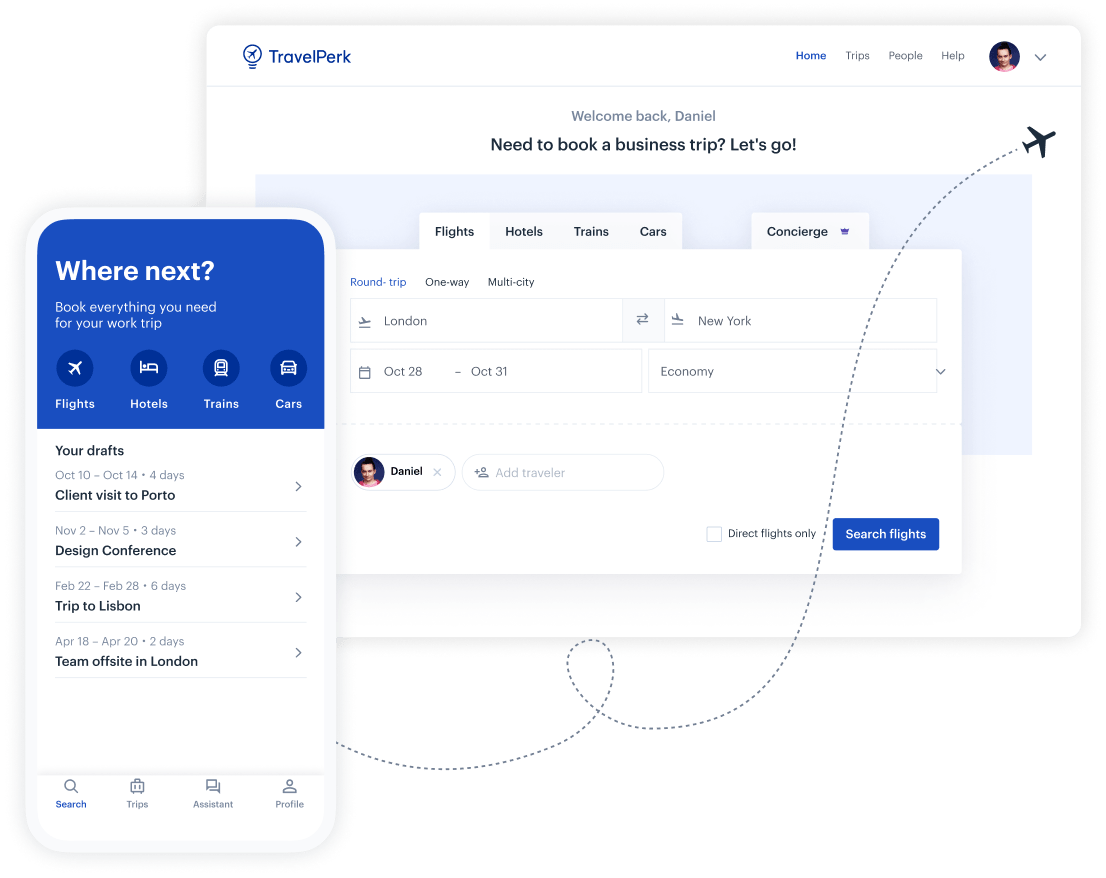The 'traditional' workplace can be a stressful environment for many of us. Demanding bosses, difficult coworkers, unreasonable workloads and long hours in the office can really take their toll on our mental health and personal well-being - perhaps you can relate.
When COVID-19 struck, a new era of remote working emerged and transformed the work-life balance for us all, changing perceptions among employees and employers about working from home.
Many employees have fought to retain the right to work from home, while many employers have tried to resist. Meanwhile, some employees and employers have adapted to a hybrid model - creating a balance between home- and office-based working.
For you, the switch to remote working may have been a welcome one. However, more than two years since the pandemic began, HR managers are now faced with another major issue - remote work burnout.
Global workplace burnout statistics
Workplace burnout is nothing new, it has become a global issue - described by McKinsey and Company as 'the great exhaustion'. However, burnout among workers intensified during the pandemic, particularly in workplaces that remained open - specifically retail, manufacturing and healthcare.
- Workplace burnout around the world reached a record high in 2020 amid the coronavirus outbreak. 43% of people from over 100 countries claimed to have experienced workplace burnout, rising from 39% in 2019 (Global Workplace Report).
- 36% of workers state that their organizations have nothing in place to help stave off employee burnout (Thrive My Way).
- Burnout syndrome accounts for 8% of all occupational illness cases (Ncbi.nlm.nih.gov).
- Women are more likely than men to suffer from burnout. 42% of women said they were consistently burned out at work, while 35% of men report feeling burned out (McKinsey & Co).
- Millennials (59%), Gen Z (58%), and Gen X (54%) shared similar burnout rates, whereas Baby Boomers (31%) had significantly lower rates (Business Health Institute).
- A high rate of burnout was reported in mid-level incomes with 44% in the $30,000 to $60,000 bracket. The lowest rate of burnout was 38% in the $100,000 and above bracket (Thrive My Way).
- Burned-out employees are 63% more likely to take a sick day and 2.6 times as likely to be actively seeking a different job (Gallup).
- 75% of workers have experienced burnout, with 40% saying they’ve experienced burnout specifically during the pandemic (FlexJobs).
- 67% of all workers believe burnout has worsened over the course of the pandemic (Indeed).
- 83% of employees say burnout can negatively impact personal relationships (Deloitte).
Pre-coronavirus pandemic statistics
Pre-COVID workplace burnout was at a lower level than the record highs recorded during the pandemic. This is despite very few employers offering remote working amid fears over employee productivity.
However, despite fewer cases of workplace burnout pre-COVID, healthcare costs relating to work-related stress amounted to $190 billion in 2019.
- 84% of millennials experienced burnout in their current job (Deloitte, 2019).
- Women are more likely to suffer from workplace burnout than men (The Independent, 2018).
- Workload was the main cause of workplace burnout (Cartridge People, 2019)
- 57% of people in the UK, 50% in the United States, 37% in Spain, 30% in Germany and France said they had experienced workplace burnout (We Forum, 2019).
- In the UK, 15% of workers suffered workplace burnout because of Brexit (Cartridge People, 2019)
- One in four employees feel burned out at work very often or always, while nearly half report feeling it sometimes (Gallup, 2018).
- 4 out of 10 people who worked 50+ hours didn’t have a burnout program in their companies (Clockify, 2019).
- Only 3 out of 10 managers addressed employee burnout (Clockify, 2019).
- Over 15 million days were lost in 2019 due to employees suffering from work-related burnout (Cartridge People, 2019).
- Burnout is a growing threat to the productivity and engagement of today's workforce. Those who struggle with balancing home and work are 4.4x more likely to show signs of job burnout (LinkedIn).
Remote work burnout
In the post-coronavirus era, record numbers of employees are working from home. In fact, there are now three times more remote jobs compared to 2020.
However, the impact of COVID-19 on remote work burnout has been staggering.
- 69% of remote employees are experiencing burnout (CNBC).
- 53% of virtual or work from home (WFH) employees are working more hours now than they were in the office: Nearly one-third (31%) say they are working “much more” than before the pandemic (Indeed).
- 48% of employees working from home say they lack emotional support (Mental Health America)
- 38% of employees suffer remote work burnout because they feel pressured by management to work more hours (Indeed).
- 21% say it’s a toss-up between pressure from managers and customers or clients (Indeed).
- 86% of remote employees have experienced high levels of exhaustion (TinyPulse).
- 35% of employees working from home say they are participating in too many virtual meetings every week (Honest Paws).
- 61% of remote workers now find it more difficult to “unplug” from work during off-hours (Indeed).
- 80% of workers are experiencing 'Zoom fatigue' (Honest Paws).
- Moving from full-time office to full-time remote work increases loneliness by 67 percentage points (The Atlantic).
Top causes of home office burnout
The three most common causes of burnout due to working from home include:
- An inability to disconnect from work
- Lacking workplace inspiration
- Missing a supportive environment
An inability to disconnect from work
The number one cause of remote work burnout is an inability to disconnect from work. With the home becoming the workplace, home-based employees are often working longer hours. It's not uncommon for employees working from home to sit through a conference call during lunch or end up working late into the evening to complete tasks.
On average, remote workers are reportedly working up to three more hours per day since COVID, which is causing some significant social and personal challenges as home-based workers struggle to balance work and life.
To prevent this, employers with remote employees need to implement a strategy that focuses on deliverables and not hours. It's important for employers to set clear expectations - for example, saying that 'we'll talk twice a day at these times'.
Shifting the emphasis from the number of hours worked to an individual's productivity enables employees to focus and complete set tasks within working hours. Employees don't feel micromanaged and employers get the best results.
Lacking workplace inspiration
Home-based working is incredibly isolating. When people feel burnt out by work, they want to do everything but work. Scientific studies prove that chronic burnout changes the anatomy and functioning of the brain. In a heightened state of stress, our brains switch to 'survival mode', impairing inspiration and a desire to work.
There are several ways that employers can help remote employees combat a lack of workplace inspiration. One way is to encourage a sense of belonging. Employers can start by establishing a set of collective team values. Find out what's important to your remote and office based workers and then identify and create ways for your team to honor those values.
For example, if fun is a priority for your employees, come up with some fun ways to bring your team together and help them bond.
Missing a supportive environment
Remote work burnout statistics show that 48% of remote employees feel that they have no emotional support from their employers. Without personal interaction with managers and co-workers, it's difficult for them to know there's anything wrong or that you need support. If you feel burnt out, you need to be able to communicate this with your managers and co-workers.
Employers can provide support by showing that they care and taking an interest in the well-being of remote employees. Connection through regular video calls and asking for honest feedback about how home-based employees are feeling is a step in the right direction. This helps to build real relationships and trust.
Taking all the remote work burnout statistics into account, it's clear that there is a major issue, but there are solutions for employers and employees to combat burnout due to working from home - certainly one of which could be hybrid working - a blend of home- and office-based working.

Make business travel simpler. Forever.
-
See our platform in action. Trusted by thousands of companies worldwide, TravelPerk makes business travel simpler to manage with more flexibility, full control of spending with easy reporting, and options to offset your carbon footprint.
-
Find hundreds of resources on all things business travel, from tips on traveling more sustainably, to advice on setting up a business travel policy, and managing your expenses. Our latest e-books and blog posts have you covered.
-
Never miss another update. Stay in touch with us on social for the latest product releases, upcoming events, and articles fresh off the press.


![28 Working From Home Productivity Statistics [2023 update]](https://www.travelperk.com/wp-content/uploads/work-from-home-1-406x230.jpg)
